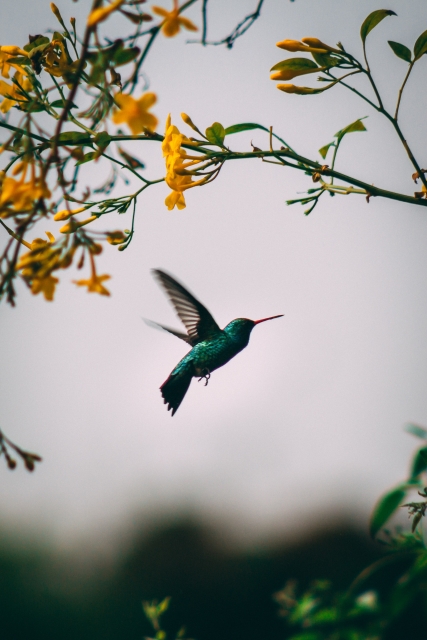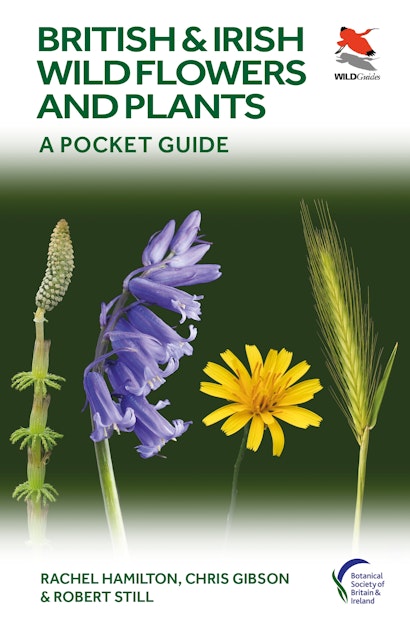The temperature is climbing, and the great outdoors is teeming again with flowers, insects, birds, and other creatures of all shapes and sizes. To celebrate the arrival of summer and the gifts of nature that come with it, we asked several of our naturalist writers and scholars to respond to the following question: How did you fall in love with natural history? This week, we hear from Dr. Robert Still, publishing director of WILDGuides and co-author of British and Irish Wild Flowers and Plants: A Pocket Guide.
“Wossat?”—a toddler’s question that my parents answered as best they could, though they were, as we probably all are, considerably more stumped during the “Why?” phase.
From these early experiences an innate quest for knowledge was nurtured within me. Additional stimulus was provided by feeding the ducks at the local park. This was an enjoyable pastime that engendered a sense of fair play and sharing but that also went hand-in-hand with a fearful age-related existential threat, which meant it was essential to be able to recognize those ducks that were aggressive enough to “bite” one’s fingers. A motivation that led to a 5-year-old to create a field guide…
That need to discern the aggressive “White Head” from the passive “Lumpy Beak” led to a personal fascination with natural hierarchies. It also gave birth to a belief that putting a name to something is fundamental to a human having a relationship with that item, regardless of whether that item is abstract, inanimate, or alive. Once things are named, any connections and differences between them become both more apparent as well as more structured in one’s mind—a process that is not without inherent issues as, if isolated from the whole, it can take on qualities that are detrimental, contrary, divisive, and destructive.
In the UK, the naming of building developments that take their name from that which have been destroyed to facilitate their creation (“Dragonfly Drive” et al.) and the evidence in the field of mental health that “connecting with nature” generates many positive emotions suggests that the human connection with nature is indeed innate and simply needs to be heard (and listened to) above the noise of contemporary life. If one stops to look, the sheer diversity of structure and strategy in nature is utterly mind-blowing—the ability to fly, to breathe underwater, and of plants to “communicate”; the minute complexity of a fly’s legs; and the beyond-human sensory abilities of hawks, dogs, hummingbirds, and many insects are just a few examples that still prompt those age-old questions: How? And why?
I will leave any God–Man–Nature or Nature versus Nurture type of debate to students of religion and philosophy to ponder alongside the likes of Plato and Descartes. Suffice to say I believe it underpins my point—that for millennia humans have thought about nature—and it seems to me somewhat perilous, if not disingenuous, for humanity to progress within that zone of a modified-with-apologies Pascal’s Wager that denies or ignores any such connection. Nonetheless, even this short essay shows how nature underpins and inspires so much of human society—be it art, music, medicine, engineering, or IT, to name but a few.
However, I know my place. Although no-nonsense accessible field guides are my thing, I will always defer to the beauty of physics, without which nature would not—could not—exist.
An example of nature utilizing physics in an amazing way can be found in hummingbirds. Although it is fascinating to learn that hummingbirds can see colors that humans cannot, there is comfort in knowing that this is because hummingbirds’ eyes contain a greater number of rods and cones than those of a human. Furthermore, it’s also quite logical to learn that hummingbirds make the most of their superhuman visible spectrum to utilize the physics of light interacting with their feather structure to create both colors that we cannot see, such as ultraviolet, and colors that do not exist in the visible light spectrum, such as magenta. However, beyond the physics is where it gets somewhat thought-provoking. Those feathers, particularly the throat feathers of some species, have multiple layers of microscopic structures which absorb some wavelengths while reflecting others. The affected wavelengths vary depending on the angle at which sunlight hits the feathers.
No doubt the question as to how these structures evolved is worth contemplation but perhaps not before the following detail has been taken on board: A displaying male hummingbird will position himself at the perfect angle to the sun in order to both maximize the color intensity and to direct the color accurately along a narrow line of sight toward a prospective mate or rival, and he may change his angle slightly to create iridescent shimmers of multiple changing colors. Is this a self-awareness combined with a knowledge of the physics of light or is it something far more mundane? I’m assuming that hummingbirds have never carried out the double-slit experiment and instead are just happy to harness the dual wave and particle properties of light for their own ends. I’m also assuming hummingbirds have also never contemplated the probabilistic nature of quantum mechanics that this duality suggests, let alone the harnessing of it by life-forms.
As mentioned previously, putting a name to these incredible entities is the doorway to understanding them. Whatever form a field guide user’s relationship with the identified life-form takes is secondary to the importance of the existence of the relationship itself. For me, it is a fascination with the sheer breadth of the diversity of form and function in nature at the population, individual, and cellular levels and beyond—quantum biology anyone?
Robert Still is publishing director of WILDGuides, a prolific natural history author and a skilled field botanist and plant photographer.

